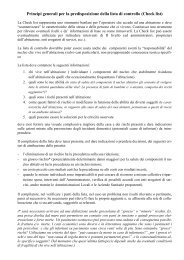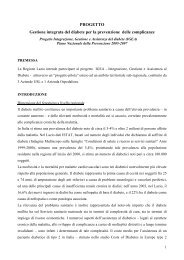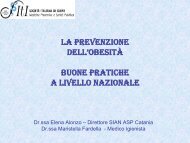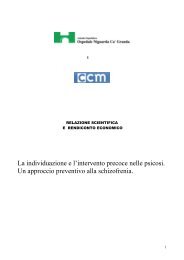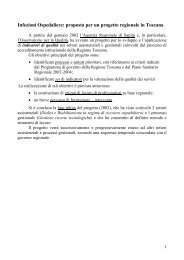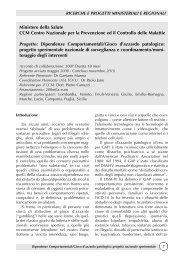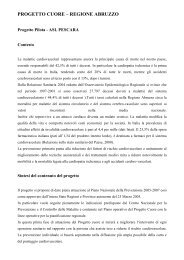Gaining health : analysis of policy development in European ...
Gaining health : analysis of policy development in European ...
Gaining health : analysis of policy development in European ...
You also want an ePaper? Increase the reach of your titles
YUMPU automatically turns print PDFs into web optimized ePapers that Google loves.
Chapter 4<br />
94<br />
on public <strong>health</strong> represent around 20% <strong>of</strong> the curriculum.<br />
Basically, ENSP aims at tutor<strong>in</strong>g specialized bureaucrats to<br />
ensure expertise <strong>in</strong> public <strong>health</strong> <strong>in</strong> national or regional<br />
government bodies. There are other universities <strong>in</strong> “specialized<br />
public adm<strong>in</strong>istration” (such as the National Education<br />
Centre for Field Workers) that tra<strong>in</strong> public adm<strong>in</strong>istrators<br />
<strong>of</strong> regional and local authorities and <strong>in</strong>clude public <strong>health</strong><br />
courses.<br />
From the very beg<strong>in</strong>n<strong>in</strong>g, ENSP was devoted to education<br />
<strong>in</strong> public <strong>health</strong> and management. Students <strong>of</strong> the school<br />
are heads <strong>of</strong> adm<strong>in</strong>istrations, state employees and doctors<br />
employed <strong>in</strong> <strong>health</strong> and social work. This has not changed<br />
<strong>in</strong> the last five decades, but the Public Health Act <strong>of</strong> 2004<br />
expressed a need for some modernization by giv<strong>in</strong>g the<br />
school more status <strong>in</strong> the education system. In 2004, the<br />
school became a postgraduate university-style <strong>in</strong>stitution.<br />
Nevertheless, the dom<strong>in</strong>ant approach <strong>in</strong> the curriculum<br />
did not change and it cont<strong>in</strong>ues to be designed for hospital<br />
directors, <strong>health</strong> <strong>in</strong>spectors, and school doctors and nurses.<br />
The programme is a one-year sandwich course with both<br />
theoretical and practical aspects.<br />
Experts consulted stated unanimously that schools that<br />
were not purely adm<strong>in</strong>istrative <strong>in</strong> approach were needed <strong>in</strong><br />
the field <strong>of</strong> public <strong>health</strong>. Nevertheless, there is no consensus<br />
as to whether ENSP could fill this role. As a strik<strong>in</strong>g<br />
<strong>in</strong>dicator <strong>of</strong> the dearth <strong>of</strong> public <strong>health</strong> tra<strong>in</strong><strong>in</strong>g <strong>in</strong> France,<br />
it is <strong>of</strong>ten mentioned that Belgium (one fifth the size <strong>of</strong><br />
France) has more public <strong>health</strong> schools and <strong>health</strong> promotion<br />
research.<br />
4. Forces facilitat<strong>in</strong>g or obstruct<strong>in</strong>g disease<br />
prevention<br />
France has many national NCD-related programmes but<br />
they exist <strong>in</strong> parallel, lack<strong>in</strong>g a comprehensive, coord<strong>in</strong>ative<br />
umbrella strategy. Ow<strong>in</strong>g to the strong advocacy <strong>of</strong><br />
specific <strong>in</strong>terest groups, reforms and new programmes and<br />
strategies have been tacked onto exist<strong>in</strong>g ones without<br />
replac<strong>in</strong>g them. This has led to an extraord<strong>in</strong>ary complexity<br />
and compartmentalization with<strong>in</strong> the system. To reduce<br />
this element <strong>of</strong> redundancy and parallelism, an attempt was<br />
made <strong>in</strong> the Public Health Act <strong>of</strong> 2004 to provide a framework<br />
for different public <strong>health</strong> <strong>policy</strong> areas. The Act be<strong>in</strong>g<br />
basically “only” a legal framework, however, it was unable<br />
to replace exist<strong>in</strong>g programmes and after 2004 even more<br />
new programmes were launched.<br />
The distribution <strong>of</strong> power is complex and lacks full transparency.<br />
The process <strong>of</strong> decentralization failed to abolish the<br />
deeply rooted vertical hierarchy; <strong>in</strong> fact, it added horizontal<br />
structures and brought <strong>in</strong> external players. While the<br />
Government provides guidance through national strategies<br />
that should be implemented at regional and local levels, the<br />
regions are also expected to develop their own regional<br />
<strong>health</strong> plans. This distribution <strong>of</strong> competencies has led to<br />
<strong>in</strong>creased overlaps and complexity. On the other hand,<br />
bodies at regional and local levels apply the concept <strong>of</strong><br />
subsidiarity, enabl<strong>in</strong>g an adequate response to specific local<br />
needs and contribut<strong>in</strong>g to reduc<strong>in</strong>g <strong>health</strong> <strong>in</strong>equalities<br />
among regions.<br />
The strong advocacy and long-term experience <strong>of</strong> NGOs<br />
substantially facilitate NCD <strong>policy</strong> <strong>development</strong> <strong>in</strong> France.<br />
NGOs not only supplement the activities <strong>of</strong> government<br />
but, ow<strong>in</strong>g to their hav<strong>in</strong>g top experts among their members,<br />
help formulate and implement <strong>health</strong> policies <strong>in</strong> the<br />
public sector. There are NCD <strong>policy</strong> areas such as cancer<br />
and nutrition that are historically “lobbied” by <strong>in</strong>fluential<br />
associations represent<strong>in</strong>g powerful views <strong>in</strong> French public<br />
<strong>health</strong> <strong>policy</strong>. For <strong>in</strong>stance, cancer research and prevention<br />
are widely <strong>in</strong>stitutionalized and multisectorally represented.<br />
Objectives <strong>of</strong> the cancer plan cover a wide range <strong>of</strong> risk<br />
factors and determ<strong>in</strong>ants <strong>of</strong> <strong>health</strong> such as smok<strong>in</strong>g, alcohol<br />
use and nutrition. PNNS also <strong>in</strong>cludes a broad range <strong>of</strong> risk<br />
factors and <strong>health</strong> determ<strong>in</strong>ants.<br />
Case studies: <strong>policy</strong> <strong>development</strong> <strong>in</strong> countries for tackl<strong>in</strong>g noncommunicable diseases



